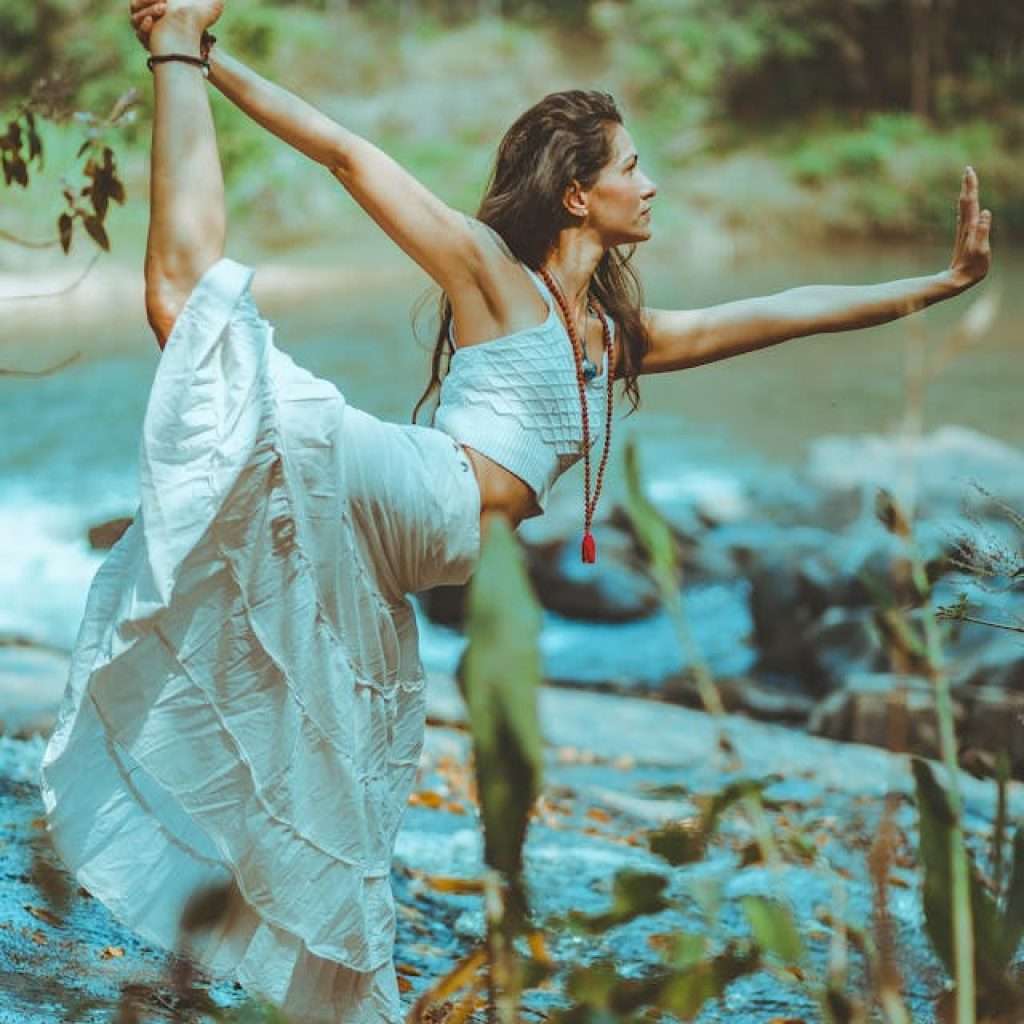
The Story and Origins of Yoga
Yoga has a profound history that dates back thousands of years. It originated in ancient India and has evolved over time. We’ll explore its roots, the ancient texts (such as the Yoga Sutras), and the spiritual practices that shaped this transformative discipline.
The Science Behind Yoga
Modern research has validated what yogis have known for centuries. Regular yoga practice enhances all systems in the body:
- Skeletal Strength: Yoga improves bone health and posture.
- Muscle Flexibility: Asanas (yoga poses) promote flexibility and balance.
- Skin Health: Yoga enhances blood circulation, giving you that radiant glow.
- Calming the Nervous System: Yoga reduces stress and anxiety.
- Digestive Health: Certain poses aid digestion.
- Respiratory and Endocrine Systems: Yoga positively impacts these vital systems.
- Healthy Elimination: Yoga supports detoxification.
AI and Yoga: A Harmonious Blend
While AI can’t replace the wisdom of ancient yogis, it complements our practice in several ways:
- Personalized Yoga Programs: AI analyzes your abilities and goals to create customized routines.
- Pose Correction and Guidance: Real-time feedback on your poses.
- Virtual Yoga Instructors: AI-driven virtual teachers for guided practice anytime.
- Yoga for Mental Health: Tailored practices for emotional well-being.
- Integration with Wearables: Fitness trackers and smartwatches monitor progress.
- Community and Social Features: Connect with fellow practitioners.
Let’s explore some specific yoga poses that are perfect for beginners. These poses will help you build strength, flexibility, and mindfulness. Remember to practice with awareness and listen to your body. Here are eight beginner-friendly yoga poses:
- Mountain Pose (Tadasana):
- Stand tall with your feet hip-width apart.
- Ground your feet into the mat, engage your leg muscles, and lengthen your spine.
- Lift your arms overhead, palms facing each other.
- Breathe deeply and feel the energy flowing through your body.
- Downward-Facing Dog (Adho Mukha Svanasana):
- Start on your hands and knees.
- Tuck your toes, lift your hips, and straighten your legs.
- Create an inverted “V” shape with your body.
- Press your palms into the mat and relax your neck.
- This pose stretches your hamstrings, calves, and shoulders while building upper body strength.
- Child’s Pose (Balasana):
- Kneel on the floor with your big toes touching and knees apart.
- Sit back on your heels and extend your arms forward.
- Rest your forehead on the mat.
- Child’s Pose is a gentle resting pose that stretches your spine and hips, promoting relaxation and calmness.
- Plank Pose (Phalakasana):
- Begin in a push-up position with your wrists under your shoulders.
- Engage your core, keep your body in a straight line, and hold the position.
- Plank strengthens your core, arms, and shoulders.
- Warrior I (Virabhadrasana I):
- Step one foot forward and the other foot back.
- Bend your front knee, keeping it directly over your ankle.
- Raise your arms overhead, palms facing each other.
- Warrior I builds strength in your legs and opens your chest and shoulders.
- Triangle Pose (Trikonasana):
- Stand with your feet wide apart.
- Turn your right foot out and extend your arms parallel to the ground.
- Reach your right hand toward your right ankle, keeping your left arm extended.
- Triangle Pose stretches your hamstrings, hips, and spine.
- Seated Forward Bend (Paschimottanasana):
- Sit with your legs extended in front of you.
- Hinge at your hips and reach toward your feet.
- Keep your spine long and breathe deeply.
- This pose stretches your hamstrings and calms the mind.
- Easy Seat (Sukhasana):
- Sit cross-legged on the floor.
- Rest your hands on your knees or in your lap.
- Easy Seat is a comfortable meditation posture that promotes relaxation and mindfulness
The Missing Piece: Live Yoga Teachers
As much as AI enhances our practice, it can’t replace the presence of a live teacher:
- Inspiration for Practice: AI can motivate you to start but can’t replace the human touch.
- Enhanced Learning through Personal Interaction: Yoga is more than just physical; it’s about connection.
- Adaptability of Teachers: Live teachers modify classes instantly based on students’ needs.
- Focus and Mindfulness Reinforcement: Teachers keep you present during practice.
- Physical Guidance for Safety and Depth: Adjustments prevent injuries.
- Holistic Approach Beyond Postures: Yoga is comprehensive; teachers offer nuanced feedback.
- Spiritual and Cultural Depth: Rooted in tradition, yoga benefits from teachers who impart context.
AI-driven yoga can inspire us to begin our journey, but let’s remember that it complements rather than replaces the rich experience of practicing with a live teacher. So, embrace both—the ancient wisdom and the modern technology—for a holistic yoga practice that nourishes mind, body, and spirit.
Nueraadd – Metroadd – Life -Health
